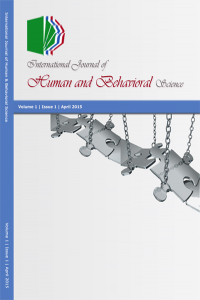Öz
Abstract
Social media or media of the new generation is now a tangible reality in Albania as it is in the entire world. In the last years social networks, blogs, different informative sites on the internet have been turned in an important element affecting the political, economic and social different societies. The development of information technology, the increase of internet users have bring the spread of the social networks, known as social media in Albania, setting it in the same line with the global trend. This characteristic is noted more even when we analyze the use of these types of media and see that in Albania has reached higher rates. In a situation where the number of Facebook users converted into 80.7% penetration level toward Internet users in the country, it is important to study the effect that this new information is making to the performance of traditional media tools and, such television.
However beside the usage of the news consumer as an information channel, the social blogs are often used as an information source by the journalists (reporters). The political communication is transferred from traditional one where the politic leaders used to be directed to the public from a television or radio, now they use Facebook or twitter to communicate to the public.
This phenomenon has directed the reporters and journalists to follow this way. That’s why most of the reporters have abandon the terrain and they are limiting the reporting area by refereeing only to the report the status of public people (like, politicians, artists , sport people etc.) on the social blogs. This has consequently brought a profound transformation in news sources for journalist raising questions about quality of the news and television reporter. Another reduction of the information levels is that of the editorial process because of the news speed consumption another thing that cause the journalist to toward to the news “poor” in sources and poor in quality.
The study aims to analyze the impact that progress of social media or new generation media brings to television reporter profession and the challenges that are faced from them. Analysis of the effects that have created social networks on how television journalists collect and serve the information to the public.
The research will be carried out based on literature that explains news sources and information collecting process as well as conducting interviews with news managers and journalists in newsrooms on several televisions, news reporters in place (terrain) and by collecting data through surveys on television reporters who exercise the profession actively.
Keywords: Social Media, New Media, Traditional Media, Communication
Anahtar Kelimeler
Kaynakça
- Abilekaj, E. (2014, January). Interview on Social Media and impact on traditional Media. (E. Cela, Interviewer)
- Basha, A. (2014, January). Interview with Anila Basha a freelancer journalist in Albania. (E. Cela, Interviewer)
- Fuga, A. (2012). Mediat Shqiptare Perballe Revolucionit Numerik dhe Web 2.0. Studime albanologjike, 159-167.
- Gjata, P. ( 2014, January). Interview on Social Media and impact on traditional Media. (E. Cela, Interviewer)
- Hakorja, F. (2014, January). - News Editor, TV Klan, Interview on Social Media and impact on traditional Media, interviewer E. Cela, January 2014. (E. Cela, Interviewer) http://www.internetworldstats.com/stats4.htm#europe. (n.d.).
- Lela, A. (2014, February 4). Më shumë zhurmë se kuptim: Mediat e reja vs mediat tradicionale; si e kanë humbur betejën dhe pse? . Mapo .
- Newman, N. (2009, September). The rise of social media and its impact on mainstream journalism. UK: University of Oxford, Reuters Institute for the Study of Journalism.
- Pavlik, J. V. (2001). Journalism and New Media. New York: Columbia university press.
- Scherer, E. (2012). A na duhen me gazetaret? Tirana : Papyrus.
- Zaimi, M. (2014, January). Social Media and impact on traditional Media. (E. Cela, Interviewer)
- Zili, R. (2014, January). Social Media and impact on traditional Media . (E. Cela, Interviewer)
Öz
Kaynakça
- Abilekaj, E. (2014, January). Interview on Social Media and impact on traditional Media. (E. Cela, Interviewer)
- Basha, A. (2014, January). Interview with Anila Basha a freelancer journalist in Albania. (E. Cela, Interviewer)
- Fuga, A. (2012). Mediat Shqiptare Perballe Revolucionit Numerik dhe Web 2.0. Studime albanologjike, 159-167.
- Gjata, P. ( 2014, January). Interview on Social Media and impact on traditional Media. (E. Cela, Interviewer)
- Hakorja, F. (2014, January). - News Editor, TV Klan, Interview on Social Media and impact on traditional Media, interviewer E. Cela, January 2014. (E. Cela, Interviewer) http://www.internetworldstats.com/stats4.htm#europe. (n.d.).
- Lela, A. (2014, February 4). Më shumë zhurmë se kuptim: Mediat e reja vs mediat tradicionale; si e kanë humbur betejën dhe pse? . Mapo .
- Newman, N. (2009, September). The rise of social media and its impact on mainstream journalism. UK: University of Oxford, Reuters Institute for the Study of Journalism.
- Pavlik, J. V. (2001). Journalism and New Media. New York: Columbia university press.
- Scherer, E. (2012). A na duhen me gazetaret? Tirana : Papyrus.
- Zaimi, M. (2014, January). Social Media and impact on traditional Media. (E. Cela, Interviewer)
- Zili, R. (2014, January). Social Media and impact on traditional Media . (E. Cela, Interviewer)
Ayrıntılar
| Birincil Dil | İngilizce |
|---|---|
| Bölüm | Makaleler |
| Yazarlar | |
| Yayımlanma Tarihi | 17 Nisan 2015 |
| Gönderilme Tarihi | 17 Nisan 2015 |
| Yayımlandığı Sayı | Yıl 2015 Cilt: 1 Sayı: 1 |


